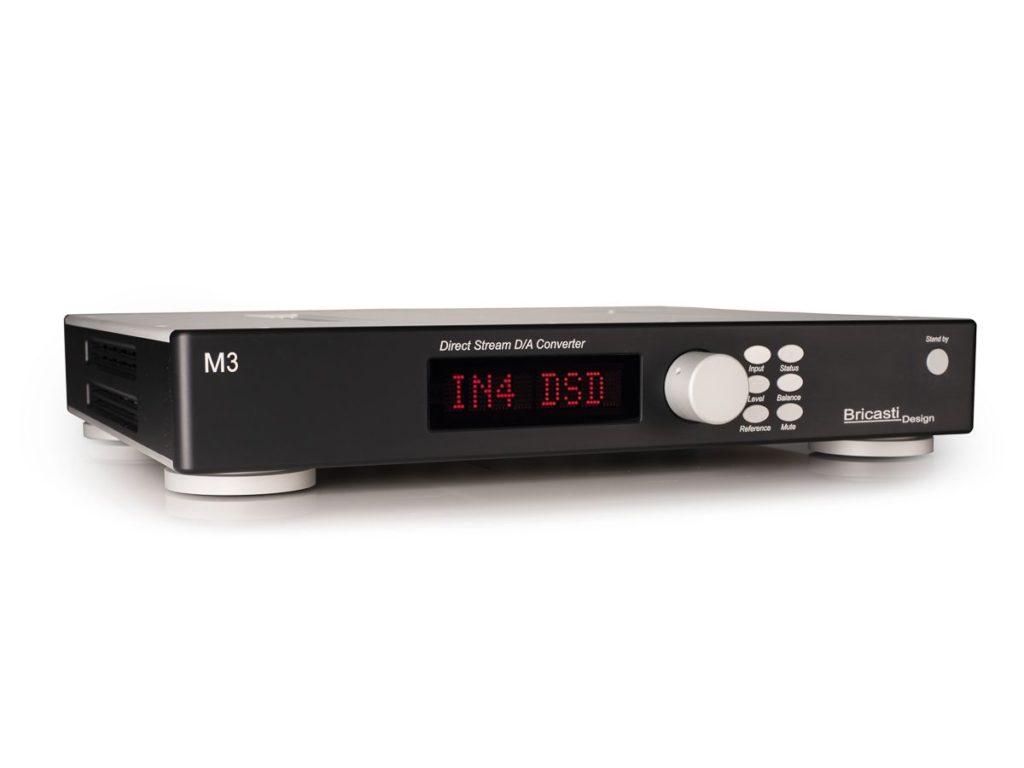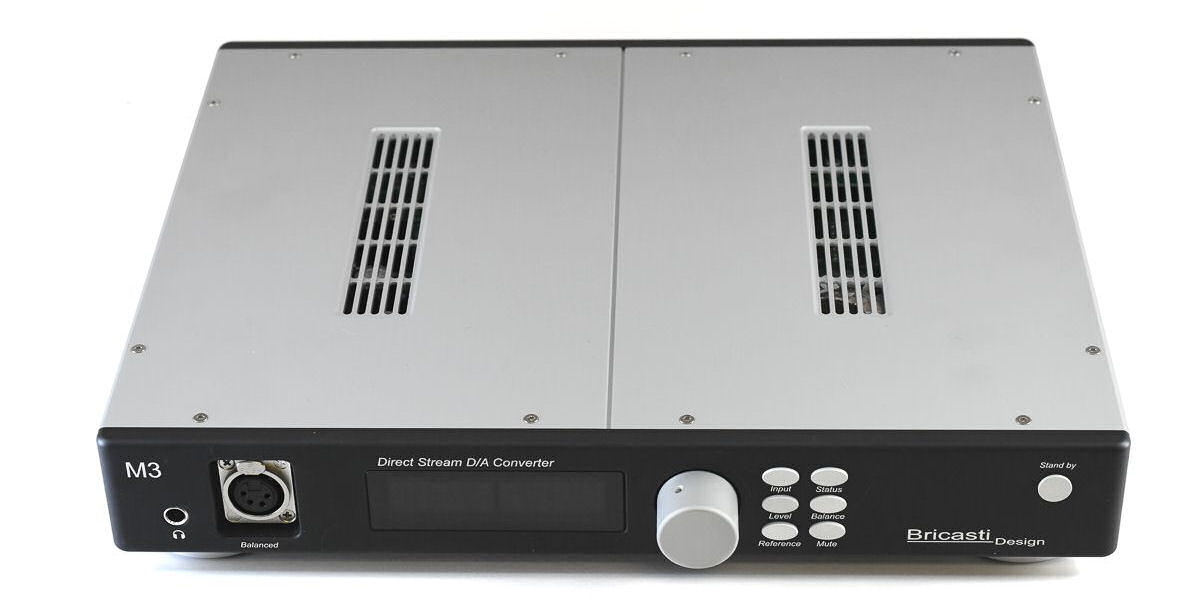A Brief History of the Bricasti M Series DACs
An Overview of the M3 and New M3H


Every story has a beginning. Bricasti has had a long development journey with their M series digital to analog converters. Naturally, the basis for the M3 came out of their design for the M1:
- D/A Converter
- Dual mono signal path
- A truly balanced topology based on dual ADI 1955 converters
- All linear power supplies
- A separate digital signal processing engine taken from the M1
Based on these design elements, the M12 was developed, which was essentially an M1 with the addition of a discreet ladder analog level control. This allowed Bricasti to develop their own native DSD conversion.
Later followed the M21, which was a standalone DAC version of the M12 and included the NDSD conversion from the M12 also with an analog attenuation state to manage the DSD. The M3 was the basis and natural evolution from the M21 and all the technological iterations before it.
About True DSD Conversion
Bricasti had the idea to create a true DSD converter in their M12 design. A DSD converter is essentially a very high-speed switch, up to 10GHz, followed by a low order analog filter. However, there was a problem in processing and converting DSD: if one is to maintain true DSD then no digital signal processing can be done. Most converters convert DSD to multi-bit or PCM format. Once converted, it allows for management of the playback for level matching, muting of transition noises are all simple and cost-effectively done in the digital domain. However, the conversion is now PCM and not a true DSD one.
Bricasti solved this in the M12 by performing the background tasks in the analog domain with programmable level control, so all signal processing is done in the analog domain and transitions from PCM to DSD are silent and level matched. However, this was very costly to convert DSD in the M12. When developing the M3 they had to come up with a more cost-effective way to manage the analog signals and deliver NDSD. This technique was brought forward into the M21 and then the M3 for true DSD conversion.
Conversion in the M3
The M3 features 2 digital audio conversion paths, 1 for PCM which utilizes a sigma-delta type as found in the M1, and the other for DSD, a true one-bit modulator of Bricasti’s own design and unique to the industry. This DSD conversion is a true one-bit analog converter followed by an analog post noise filter. Both converters create a true differential analog waveform from the digital data stream, and as in the M1, the M3 also employs a discrete current to voltage conversion stage to create the true balanced signal.
The M3 Analog Section
As stated previously, the M3 is a truly balanced converter. The complete analog path and its attenuator are also true differential. The M3’s (like the M1) unbalanced outputs are separately buffered allowing for the use of both outputs simultaneously to drive different amplifiers or preamps. For instance, you could drive a subwoofer on one output and a main speaker amp on the other. The M3 has a robust linear analog power supply with voltage rails of +15V and -15V. Therefore, the M3 can be used to drive the power amps directly with no issue of available current.
The M3 utilizes the same attenuator as the M21 and was chosen for its small footprint and low power consumption. The attenuator has a dual function in the M3: one for managing the NDSD conversion path and the other is the ability to use the M3 as a preamp source, to direct drive the power amps or headphones.
The M3 - Delivering A True Balanced Source
The M3 has the option for a balanced headphone driver, called the M3H. The balanced converter follows through to all the analog stages of the M3, making it one of the only true balanced headphone sources on the market. As the main outputs, the headphone drivers are also separately buffered so that all output can be used at the same time. Given the high voltage rails in the analog supply, the M3 is capable of driving most common headphones to acceptable listening levels with extremely low distortion.
Summary
The M3 delivers a true balanced source for all applications. The M3H is unique in the market as one of the only true balanced sources to drive balanced headphones correctly. It also provides the best conversion for both PCM and DSD sources and support for all input sources including network streaming.
The Bricasti M3 DAC and M3H DAC+AMP
(All product specifications are on the website page at the links below)
Bricasti M3




Bricasti M3H DAC+AMP




If you’d like to hear the Bricasti M3 or M3H, contact Moon Audio to book your personal listening session. Email us at sales(at)moon-audio.com or call +1 919-649-5018.
Happy listening!
